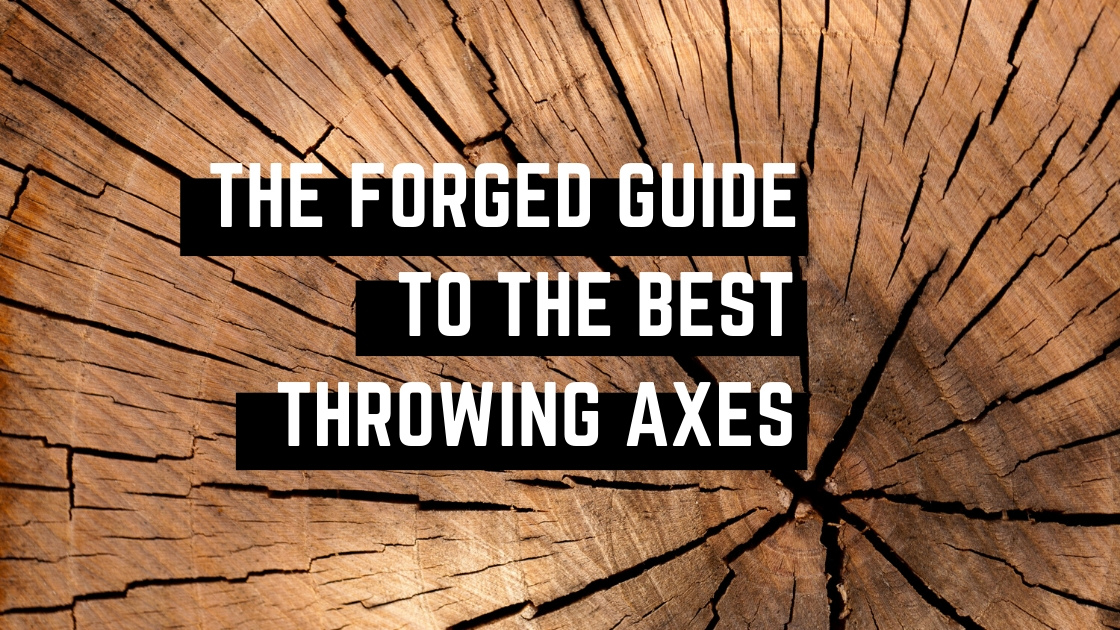The Forged Guide to the Best Throwing Axes

Axes date back to medieval times with warriors, hunting, battling and survival. The age-old tool, however, is still around and widely used today in camping, hunting, building, cutting, chopping etc. A more recent (and more fun) development in the axe world has come from simply throwing them!
Where Did Axe Throwing Start?
Well, there’s a little more to it than that. Back in 2006, Matt Wilson of Toronto, Ontario was bored in his backyard. He and his friends were just laughing, throwing axes around. They quickly discovered how much fun it was, how competitive it could be, and how many other people were interested in getting in on it. Thus, the aptly named Backyard Axe Throwing League (BATL) was born and has since expanded internationally.
Over the last decade and a half, axe-throwing has become a phenomenon and attracts large audiences for corporate parties, stags and stagettes, drop-ins for rainy afternoons, team-building and epic date nights. With no experience necessary, axe-throwing has taken the recreational sports league by storm.
What Is Axe-Throwing All About?
A simple, quick description of axe throwing is that you are literally throwing axes at targets to yield the highest number of points. There are several types of axes, ways to throw them and different games to play, all of which your coach at any given establishment would inform you of and walk you through. If you’re a first-timer and want to know more about where this seemingly primitive activity comes from, you can check out our guide.
Where Can You Throw Axes?

(Hint – throw them with us!)
Obviously, you can throw axes with us at Forged Axe Throwing, but the sport is now a world wide phenomena. Axe throwing venues have been popping up all over the world, as it is a relatively simple concept and anything from an old warehouse to an abandoned storage unit could be refurbished into axe throwing lanes (the more rustic, the better!)
There are already hundreds of locations in Canada and the USA, but you can throw axes at various venues in the land down under, New Zealand, all across Europe, even in China and Indonesia.
As we mentioned, drop-ins with friends and parties are super popular, but league and competition have evolved into a large part of the sport. For those who found a passion in the sport and wanted to take it to the next level, axe throwing leagues were cultivated. Most leagues run in 8-week seasons and meet weekly. Competitions and championships grew from these leagues and now can be found regularly.
Standardizing Axe Throwing Around the Globe
As axe throwing grew and became more popular, the World Axe Throwing League (WATL) was born to standardize axe throwing and create a place to communicate, share and compete. The WATL outlines rules and standards and mostly focuses on competition.
The International Axe Throwing Federation (IATF) came to be in 2016 as the sport continued to grow, deeming itself a “catalyst for the phenomenal growth of the sport worldwide.” The IATF represents over 10 000 members in six countries and over 150 cities. They seek to standardize and promote rules, sportsmanship, competition and safety.
Which Axe to Choose?
Now, if you’re a beginner the last thing you need to think about is picking out your axe. Venues provide axes and the make of the handle is likely to be the least of your concerns. However, a pro golfer wouldn’t use a rental driver and every MLB star swears by their own glove. A competitive hockey player wouldn’t use just any stick and even pro bowlers have a ball of preference.
Same goes with axe throwing. There are fairly rigid standards for axes that are allowed in competition, which we will touch on. But if you’re getting into advanced axe throwing, even just for fun, we’ve given you some ideas of the best and most fun axes to use, whether they fit the regulations or not.
Axe Standards for WATL

Different competitive leagues play by different rules.
Like many varying organizations, the World Axe Throwing League have slightly different specifications for axes compared to the International Axe Throwing Federation. WATL requirements are as follows:
- Maximum four (4) inch blade
- No protruding sharp bits or double-ended head (single bit blade)
- Must be a maximum length of nineteen (19) inches from the bottom of the handle to top
- If the axe is one-piece full metal, the head must be one solid piece
- Must be a maximum weight of three (3) pounds
When competing, if your axe is deemed broken, you must be able to supply a back-up axe within one minute and you will be allowed one practice throw (competitions are no joke!)
Axe Standards for IATF
- Handle must be wooden
- No protruding sharp bits or double-ended head (single bit blade)
- Length must be between thirteen (13) inches to seventeen (17) inches from the bottom of the handle to top
- The weight of the head must be 1.25-1.75 pounds (this will be stamped, if not, can be weighed by an official)
- The blade must be fixed and no longer than four (4) inches
- In BIG AXE throwing, must weigh between 2.25-2.75 pounds and have a total length of at least twenty-five (25) inches and be all wood
Top 6 Throwing Axes
As throwing is a relatively emerging sport, it’s a win-win if you also enjoy camping or hunting as these axes are great tools for these activities as well!
Small hatchets or forest axes are designed to be light-weight and easily cut through obstacles like tree branches. This makes them a perfect candidate to stick into wooden targets, hence why these types are the most commonly found in axe throwing, and what you’ll probably pick up first. Steel one=piece axes 14-16 inches are also commonly used and a good choice, however, they do not comply with the wooden handle requirement of IATF.
For beginners, a heavier axe is the best choice as it is more forgiving and more likely to stick in the target. Any camping hatchet can do the trick, and one that is three to five pounds is a good place to start. Once you improve, a lighter axe can be used for more speed and precision but you better be confident with your accuracy! Wooden handles are aesthetically pleasing but are easier to break. A full steel axe is good for beginners as well.

Billed as the “best axe for beginners”
Estwing’s Camper Axe
The best axe for beginners as it is a one-piece model with a tough grip. No wooden handle to break or give you splinters and an affordable price.
- Three pounds
- 4” blade, 16” body
- $40
- Will hold a sharpened edge and is durable
